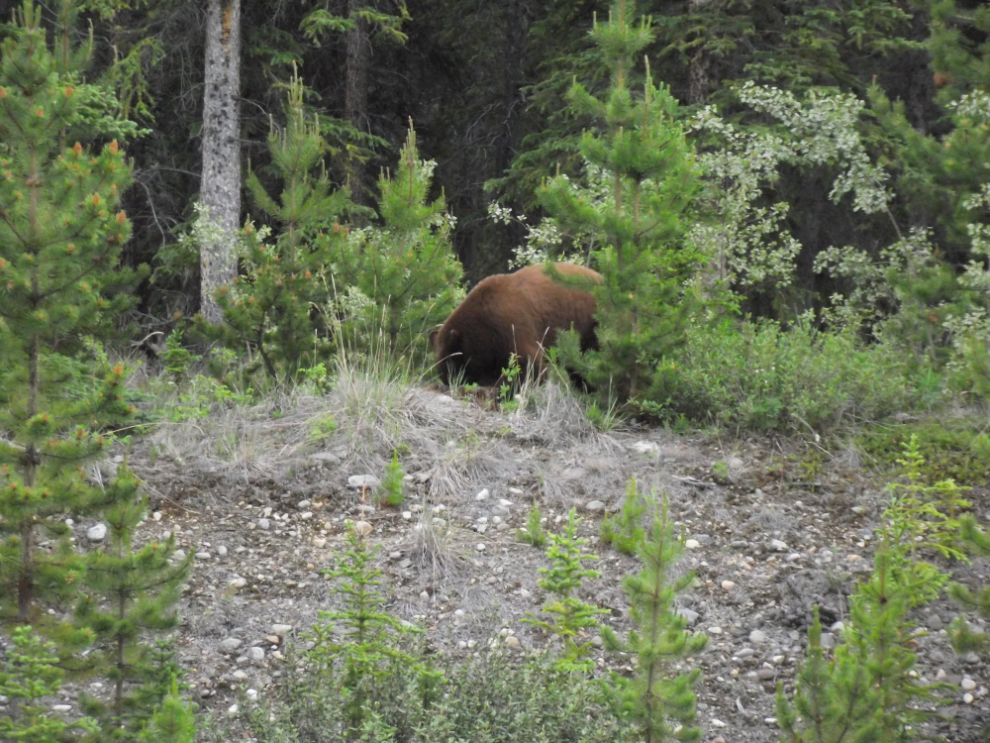Being a tourist at Whitehorse – museums, bears and more…
I got distracted a bit, but now I’m back to my week being a tourist at home. For Sunday, June 19th, the plan was to tour around Whitehorse, visit the Transportation Museum and the Beringia Interpretive Centre, then drive up to Tagish to see one of my cousins and her family.
During our tour of housing areas, we came across this timber frame house being built on one of the new lots opened up at Takhini North. This is a very unusual method to use in the Yukon, and this was the first I’d ever seen at this early stage on construction. We stopped and had a close look at it as we were all intrigued by the craftsmanship.

Our first museum stop today was the Yukon Transportation Museum, one of my favourites.

The best museum value in the Yukon is probably the combination offer from the Transportation Museum and the Beringia Interpretive Centre – it only costs $9 to visit both of these facilities.

We each added another stamp to our Yukon Gold passports.
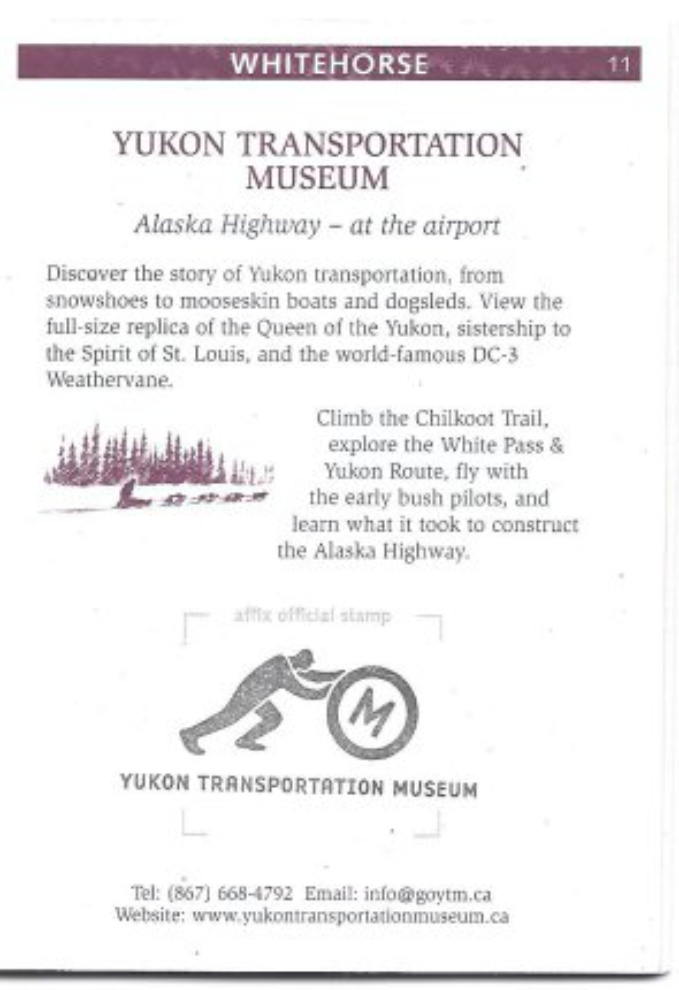
A tour for a group from an RV caravan had just started so we tagged along for a few minutes but then left and went exploring on our own. This Chilkoot Trail display is located on a small gallery above the main hall.
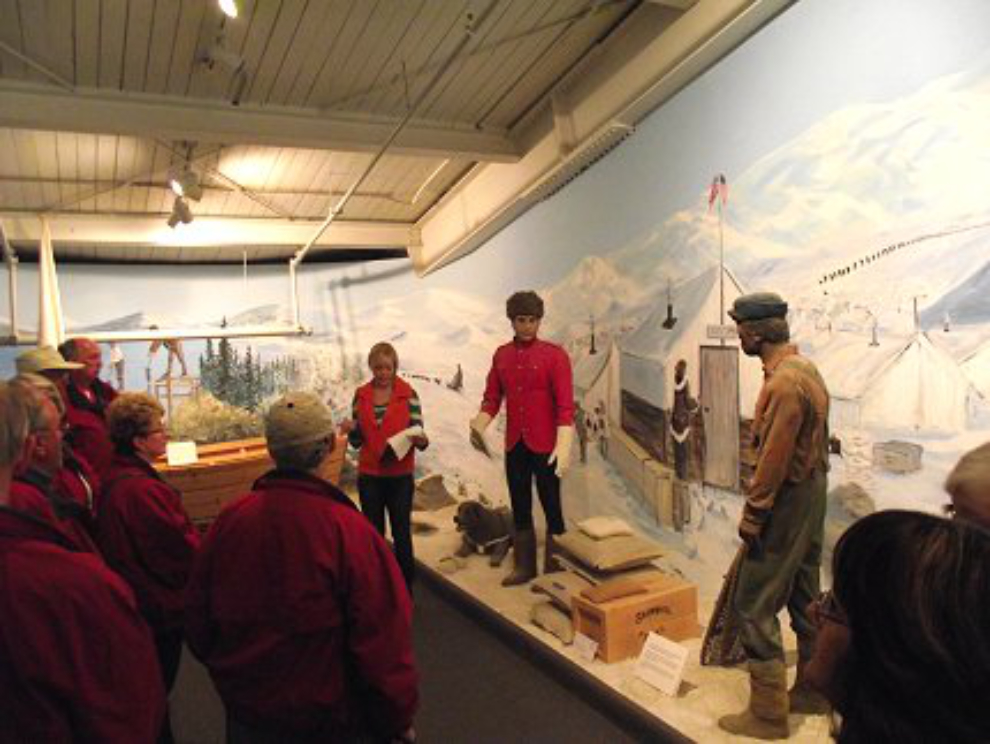
This is the view of the main hall from that gallery, with a replica of a 1927 Ryan B-1, the “Queen of the Yukon”, hanging from the ceiling. It was built to hang outside the Yukon pavilion at Expo ’86 in Vancouver.
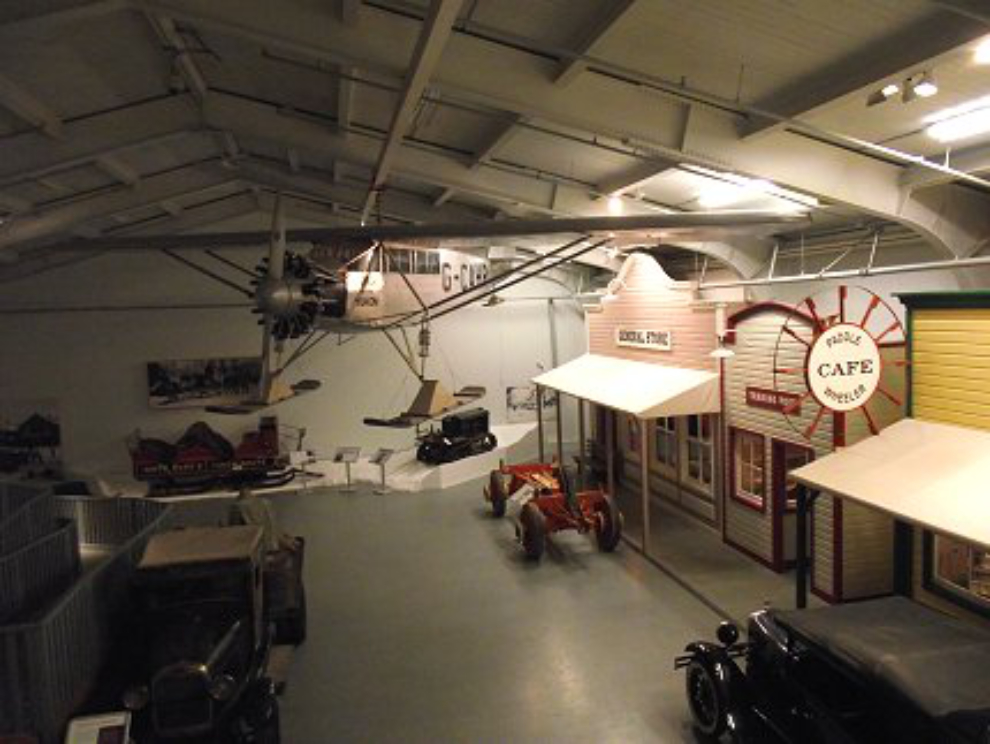
The life of the “Queen of the Yukon” was very short. On May 5, 1928, 8 months after delivery, a gust of wind caught her while landing and pilot Tommy Stephens crashed into the company agent’s truck, damaging the “Queen” beyond repair.
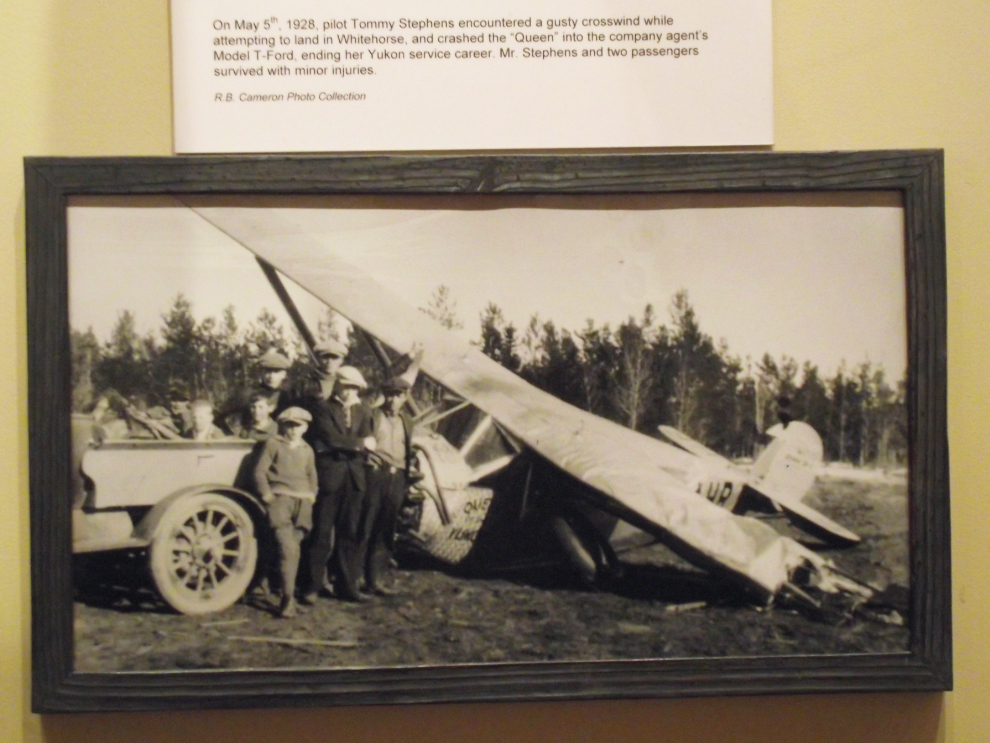
This fellow is loading freight into the back of a 1929 Ford AAC flatbed truck, with a WP&YR passenger car behind.
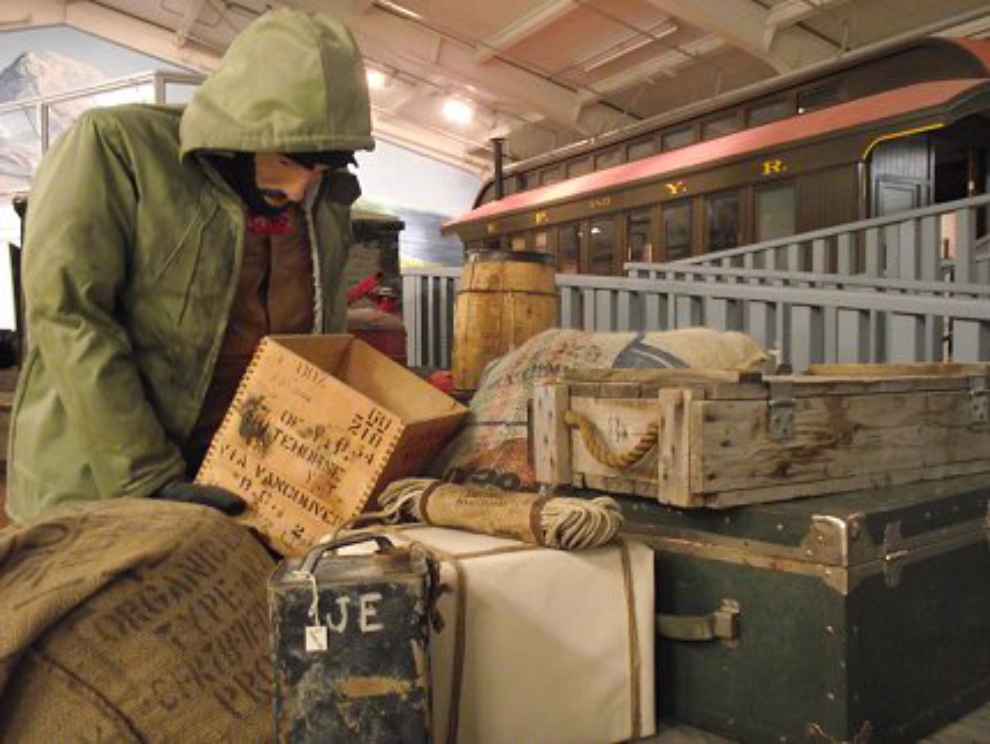
These sternwheeler models are in the model railroad display. I wrote a fairly lengthy article about the display when it was opened in 2001 but although it still looks great it unfortunately doesn’t run anymore. An offer by a new model railroad club to rebuild it was recently turned down for some reason.

This large photo of a couple of Douglas C-47s over Whitehorse is in the hall leading from the main exhibit hall into the annex, which if I remember correctly was built for the re-restoration of CF-CPY, the DC-3 that sits on the pedestal outside.
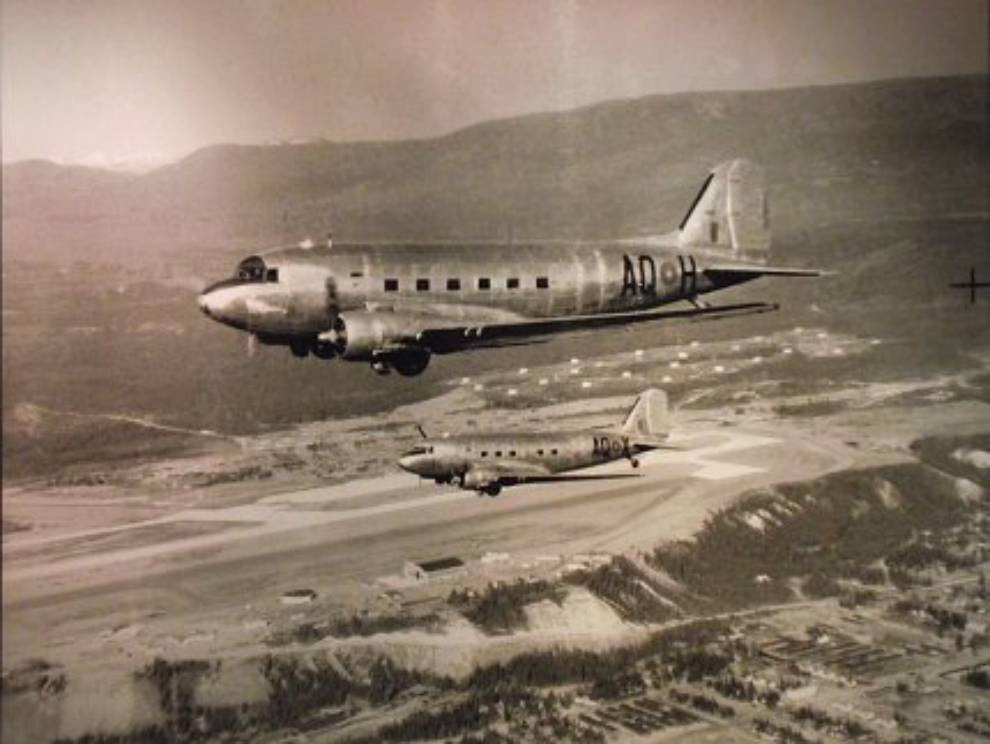
This 20-passenger Pony Cruiser bus was operated by the British Yukon Navigation Company (BYN), a division of the White Pass & Yukon Route. BYN started bus service on the Alaska Highway in 1945, and ran until 1965 when they sold out to Canadian Coachways. In my personal collection I have a few timetables, brochures and other documents from the early days of bus service on the Alaska Highway.
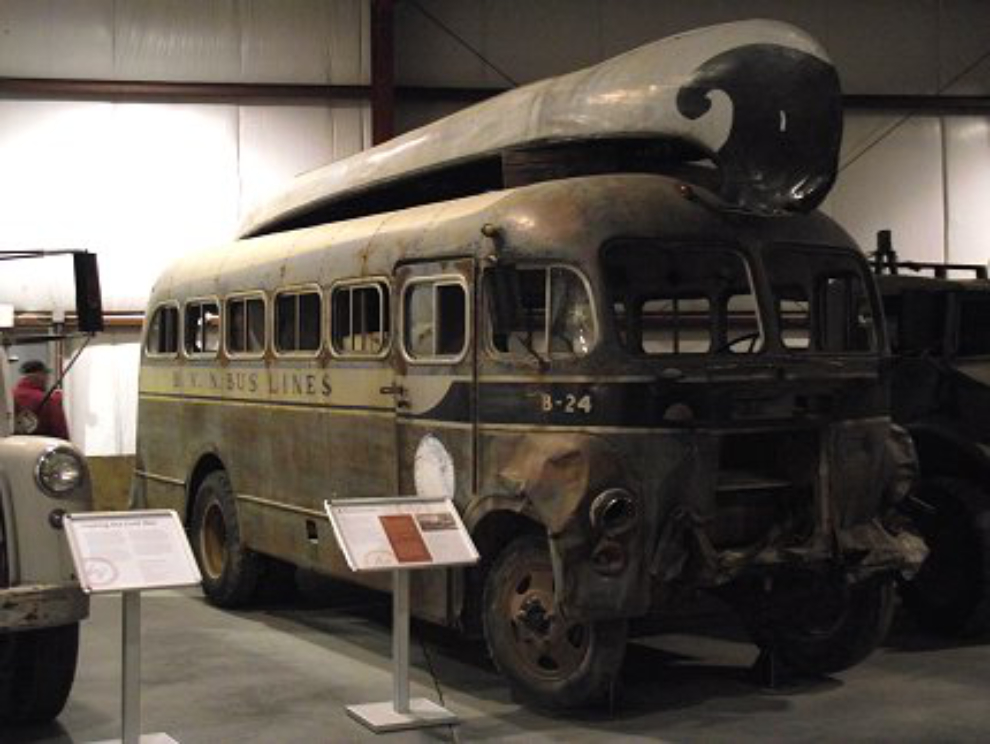
This display shows the sort of WWII wreckage that lay around the Yukon until a major cleanup was done in the early 1990s. It’s a shame that very little was saved.

Restoration of this 1928 Fairchild FC-2W2 is coming along nicely. Built in New York, she was brought to the Yukon in 1943 to start work with Northern Airways, which was based at Carcross. Formerly registered as NC8036, her Canadian registration was CF-BXK. She was rebuilt as a Model 71 in 1949, and when she crashed in BC in 1963 was the oldest Fairchild 71 operating in the world.
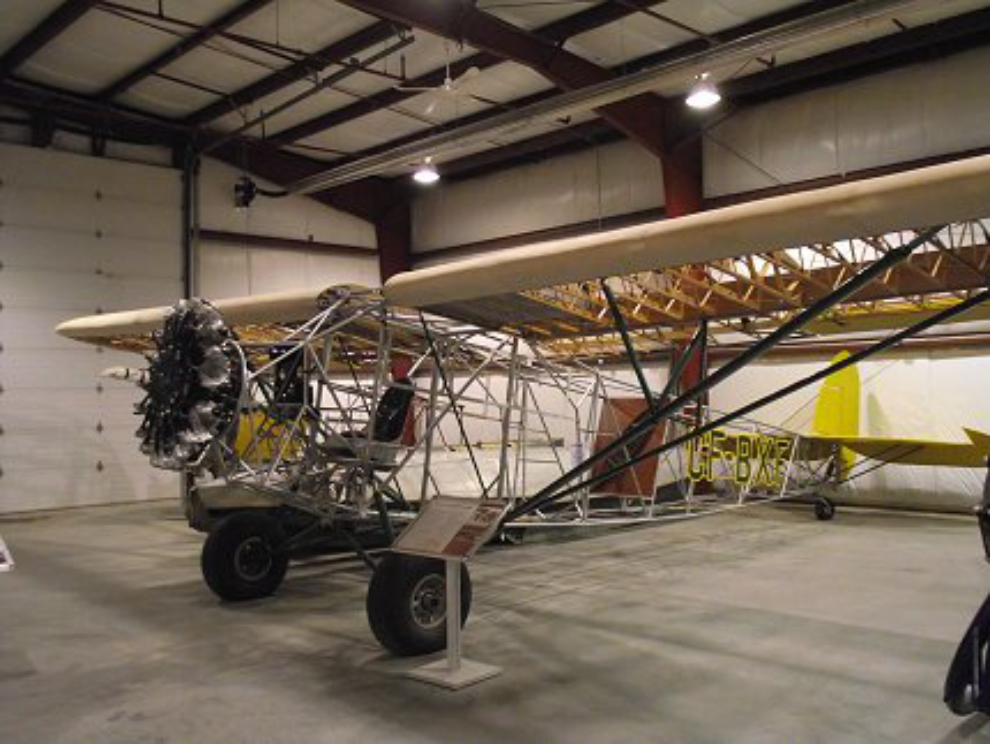
Next it was over to the Yukon Beringia Interpretive Centre next door. This photo shows the facility as seen from the Alaska Highway.
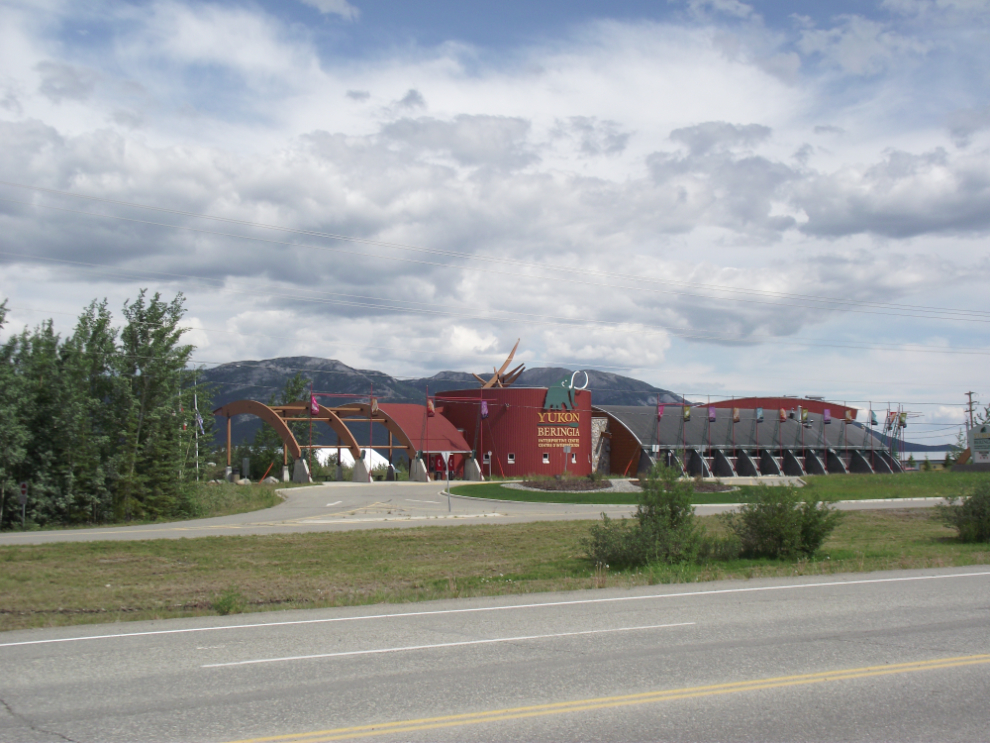
From the main parking lot, access is via this paved trail through the forest, which has some interpretive side-trails as well.
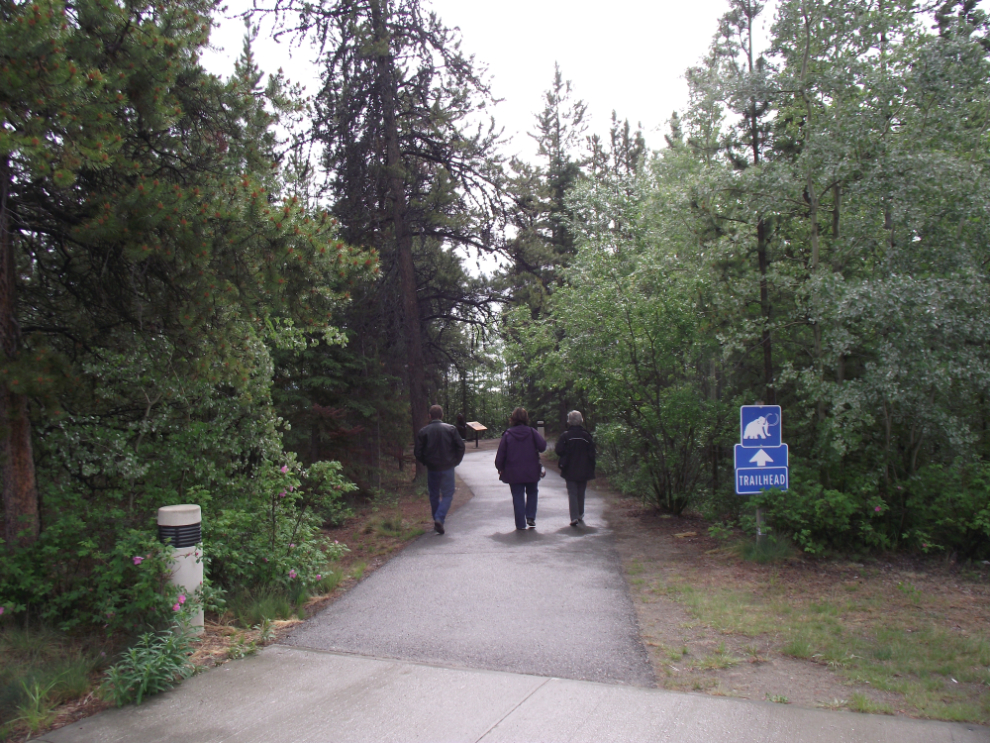
Another stamp for the passport 🙂
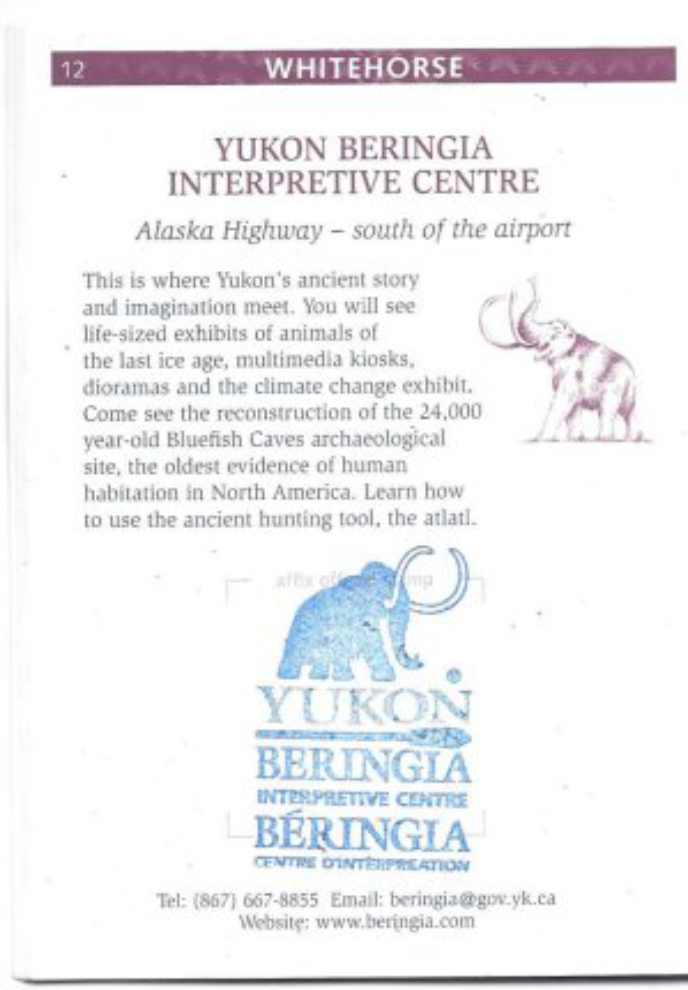
The guide did a very good introduction to Beringia, often called the Bering Land Bridge. It was formed when sea levels dropped 100-150 meters during Ice Ages, and joined Asia and North America, allowing animals and people to migrate.

This lion-sized scimitar cat is one of the more impressive displays.
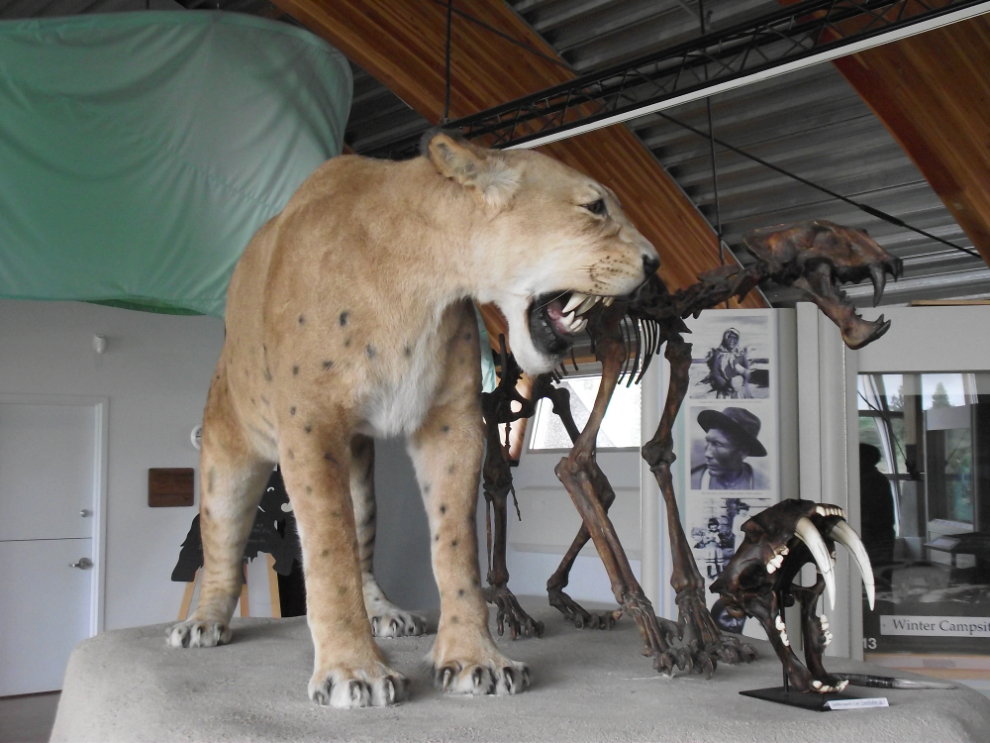
This large sculpture, titled “Where Legends Meet”, was a collaborative piece by Keith Wolf Smarch, Brian Walker and Mark Porter.

This exhibit shows the Bluefish Caves near Old Crow, Yukon. Dated at 24,000 years old, traces of human presence in the Caves are the oldest currently known in the New World. The caves have also yielded significant deposits spanning the late Ice Age period, between 24,000 and 11,000 years ago.
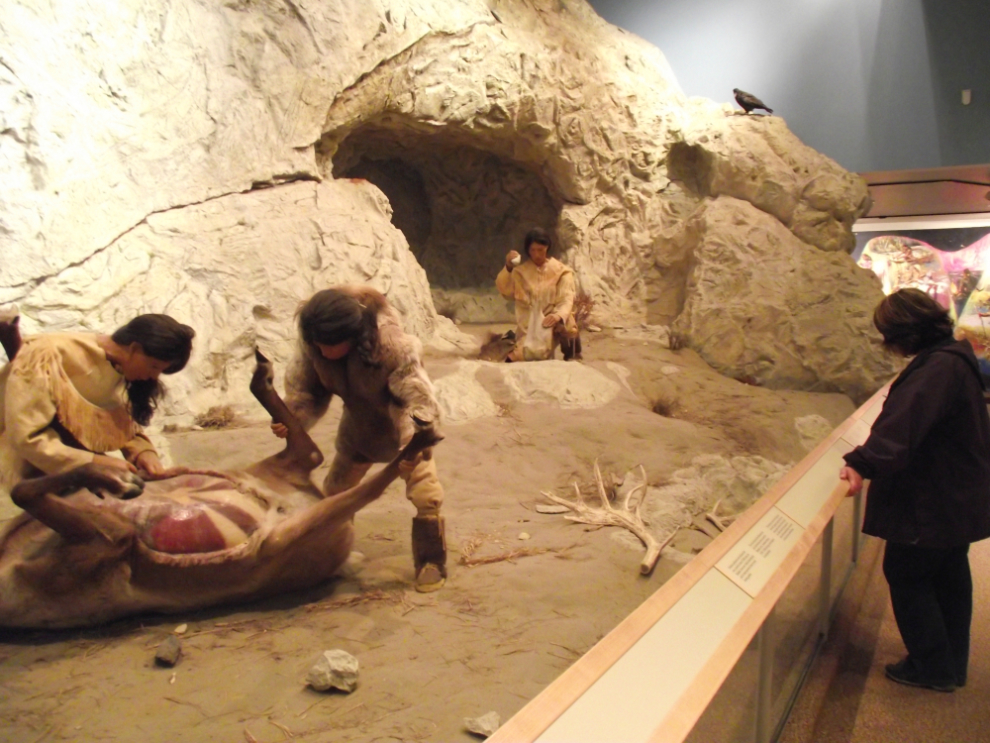
This small model shows what a dig at the Bluefish Caves looks like.
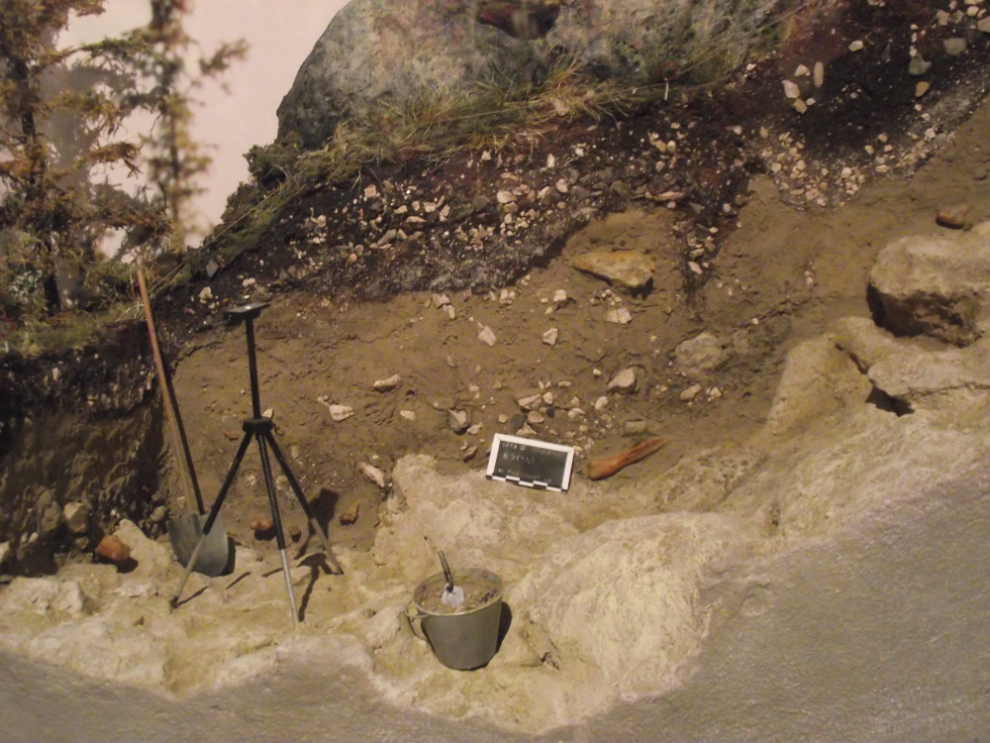
An excellent dinner with family at Tagish was a fine way to end the day. It had been many years since my sister had seen my cousin and some people at this table had never met.
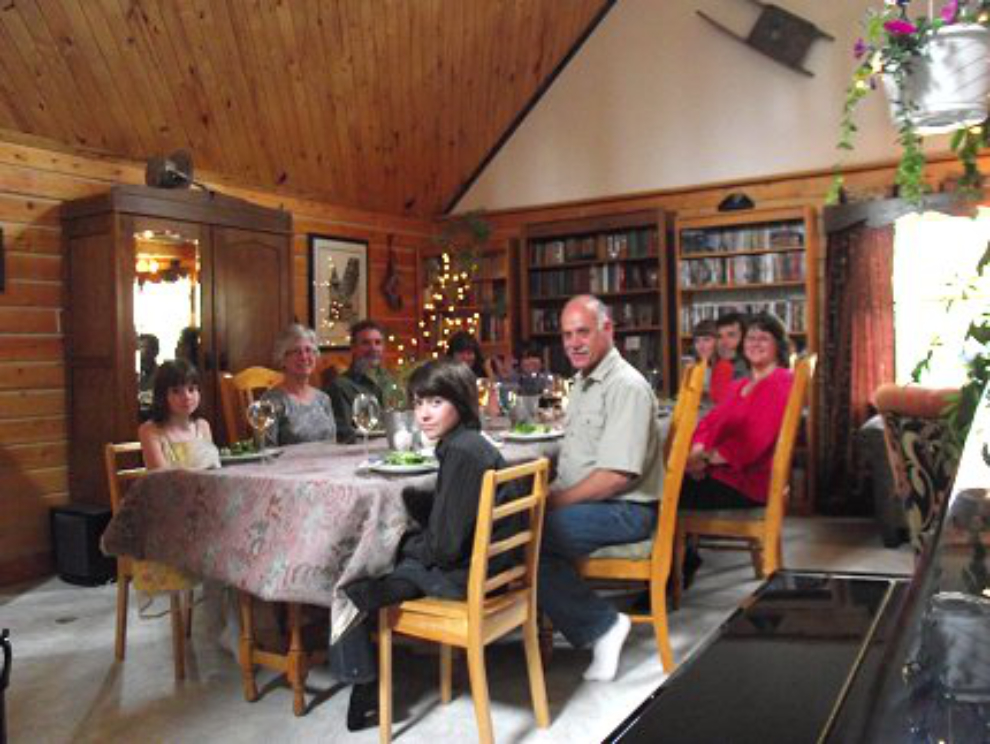
My cousin has the knack of making little touches like this work 🙂

As we drove home, we came across 2 black bears together on the South Klondike Highway near Robinson, just before 10:00 pm. There was one black one and this brown (“cinnamon”) one.
